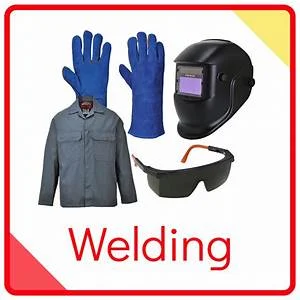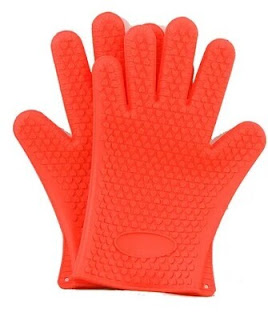Sparks Fly Safely? Ensuring Welder Safety with Proper Safety Equipment
Sparks Fly Safely? Ensuring Welder Safety with Proper Safety Equipment
Introduction: Welding is a skilled and essential profession that requires precision, focus, and, above all, safety. As welders work with intense heat and powerful tools, it's crucial to prioritize safety to prevent potential accidents and injuries. In this blog, we'll discuss the importance of safety in welding and explore the essential safety equipment that welders should utilize to protect themselves during the welding process.
1. Welding Helmets:
Welding helmets are
the most critical safety equipment for welders. They shield the face, eyes, and
neck from intense light, sparks, and harmful UV radiation emitted during the
welding process. High-quality auto-darkening helmets automatically adjust the
lens shade to protect the eyes when the arc is struck, providing optimal
visibility and reducing eye strain.
2. Protective Clothing:
Welders should wear
flame-resistant clothing made from materials like leather or cotton to protect
their skin from sparks and potential fires. Welding jackets, aprons, and
welding sleeves provide additional coverage and protection against heat and
sparks.
3. Safety Glasses and Goggles:
Welders should wear safety glasses or goggles under their
welding helmets to protect their eyes from flying debris and particles. Clear
safety glasses can be used for grinding and setup tasks, while shaded goggles
should be worn during welding.
4. Welding Gloves:
Welding gloves made
from leather or heat-resistant materials protect the hands from burns, sparks,
and hot metal splatter. Insulated gloves are especially crucial for
high-temperature welding applications.
5. Respiratory Protection:
Welding generates
fumes and gases that can be harmful to the respiratory system. Welders should
use respiratory protection, such as N95 masks or powered air-purifying
respirators (PAPR), to prevent inhalation of hazardous particles.
6. Ear Protection:
Welding processes can
produce loud noises that may lead to hearing damage. Earplugs or earmuffs
should be worn to protect the ears from excessive noise levels.
7. Welding Curtains and Screens:
Welding curtains and screens create a safe work environment by
shielding nearby workers and passersby from sparks and UV radiation. They also
help to contain the welding area and prevent potential hazards from spreading.
8. Fire Extinguishers and Fire Safety Equipment:
A fire extinguisher should be readily available in the welding
area to tackle small fires. Additionally, fire blankets can be used to smother
sparks or flames in case of emergencies.
9. Proper Ventilation:
Adequate ventilation
in the welding area is crucial to disperse fumes and gases, reducing the risk
of respiratory issues. Ensure that the workspace has proper ventilation or
consider using welding fume extractors to maintain a safe working environment.
10. Training and Knowledge:
Perhaps the most
critical safety equipment for a welder is proper training and knowledge.
Welders should receive comprehensive training in welding techniques, safety
protocols, and emergency procedures to minimize risks and handle potential
hazards effectively.
Conclusion:
Safety is paramount in the welding
profession, and the right safety equipment plays a vital role in protecting
welders from potential dangers. From welding helmets and protective clothing to
respiratory gear and fire safety equipment, each item is essential for
safeguarding welders during their work. By adhering to safety protocols,
investing in high-quality safety equipment, and ensuring proper training,
welders can create a safe and productive work environment where sparks fly
safely, and welding projects are completed with precision and confidence.
Remember, in the welding world, safety equipment isn't just a precaution; it's
the armor that keeps welders protected and ensures they can perform their craft
with skill and security.




Comments
Post a Comment